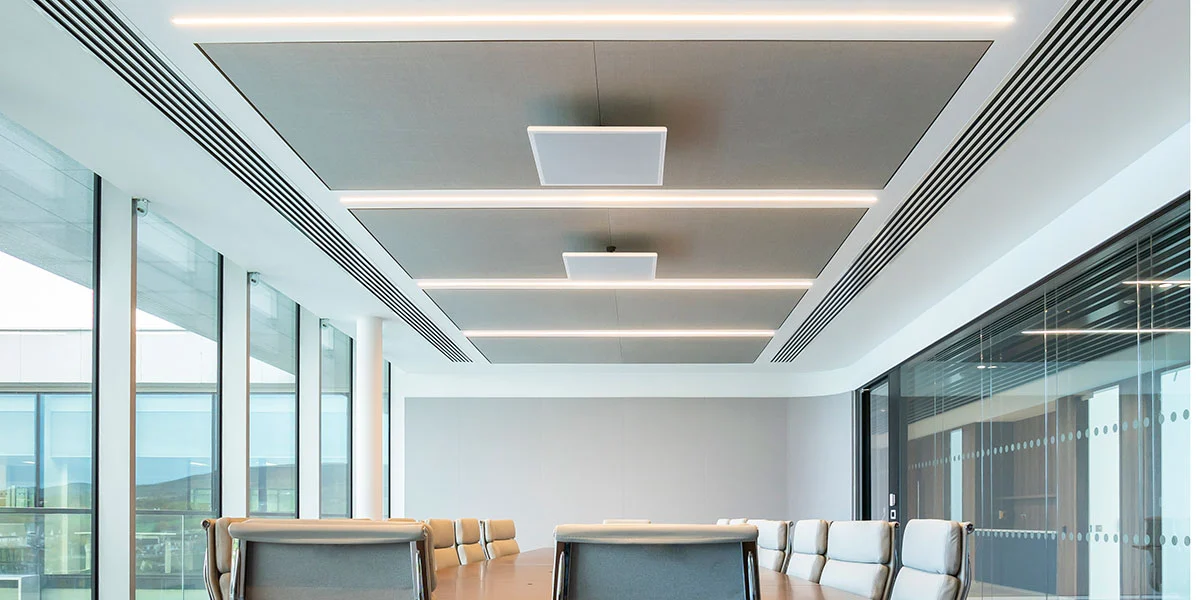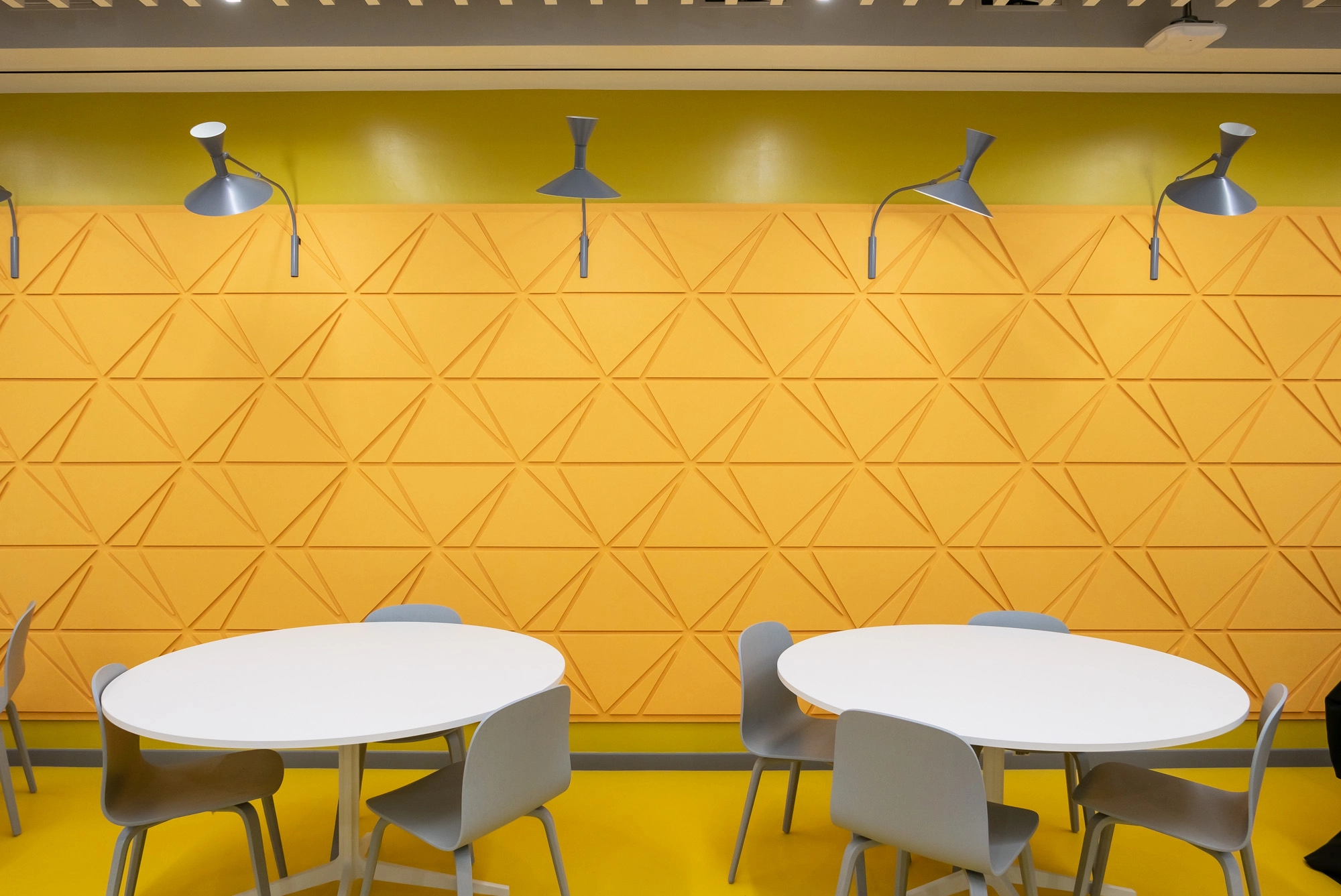
Acoustic panels are fabric-wrapped boards that control echo in a room. They are typically used in commercial soundproofing treatments to help resolve speech intelligibility issues. This article explains why you need acoustic panels, how they work and how to install them.
If you want to minimise background noise and give your business a modern look, Acoustic Panels can help. These panels work similarly to snowflakes absorbing sounds from their surroundings. As a result, they have a calming effect and create a sense of reverence.
Sound-absorbing acoustic panels are an affordable and effective way to protect your space from unwanted noise. These panels come in various sizes so they can be easily installed. Their Noise Reduction Coefficient (NRC) rating measures how well they absorb sound. It is best to choose panels with a higher NRC rating.
Acoustic panels are typically installed on walls or ceilings, and they can reduce the amount of echo and reverberation in a room. As a result, they can improve speech intelligibility by absorbing sound and making the space more comfortable. You can use these panels in classrooms and offices to make any environment sound more pleasant.
There are several factors to consider when selecting acoustic fabric for walls and ceilings. One of the most important is the fabric. The wrong fabric can reduce the sound-absorbing properties and will decrease the overall performance of acoustic panels.
Choose an unbacked fabric. Fabric that is backed does not absorb sound effectively and will transmit it to the panel core. It is also important to choose a fabric that stretches. This is especially important if the fabric covers the panel’s frame.
Acoustic panels are made from a variety of materials. Some are porous and can be hung on a wall. These panels are available in different shapes, colours, and sizes. They are designed to prevent reverberation and eliminate sound reflections. Generally, acoustic panels should be evenly spaced in a room, although they can be arranged in many ways. Depending on the purpose of the room, you might want to use between eight and ten panels.
Often, office spaces are noisy. Whether it is a large office space or a small office, acoustic panels can help reduce background noise and keep employees and customers comfortable. They can also be used in large restaurants and concert venues. These panels regulate three acoustics principles: reverberation, echo, and absorption.
There are two types of acoustic panels, horizontal and vertical. Horizontal panels absorb direct sound waves, while vertical panels keep a space quiet. Both types are useful for lowering background noise and making speech intelligible.
Acoustic panels are also useful for absorbing noise from HVAC systems. For example, they can be positioned in the ceiling to hide noisy ductwork. Acoustic panels are also easy to customise and can be easily cut to size.
Remember that first impressions are everything when choosing an acoustic panel for your workspace. An attractive, modern workspace can inspire a client or customer to buy a product or work with you. You can also find acoustic specialists on sites like Vibe by Vision, which features design jobs.
These panels are available in a wide range of designs to suit any decor. As a result, they can be an excellent solution for acoustic issues, especially in open-plan offices. In addition to providing excellent sound absorption, they can also add a fresh and modern look to your office.
Acoustic panels can also be used for conference rooms. They help to eliminate echo and improve sound quality during video conference calls. The panels also have a unique aesthetic appeal that will complement any room’s decor.

The acoustic panels work as a funnel to absorb sound waves. Sound waves are redirected from a speaker and bounce back and forth in the room. They hit the foam and wall surfaces as they travel and are then absorbed by the panels. The result is that the room sounds clearer.
The thickness of the panels determines how effective they are at absorbing low frequencies. Thinner panels are better than thicker ones because they have an air gap that allows them to trap sound waves from both directions. The panels’ density is another consideration. If the density is too high, bass frequencies bounce off the panels, reducing bass performance.
What are your thoughts on installing acoustic panels? Using our solutions comes with a wide variety of advantages. For more information about our acoustic solutions, contact us today!
Acoustic panels have sound-absorbing properties that are beneficial for soundproofing buildings. They can be made from various materials, including wood and sustainable hemp. These natural resources have properties that can be advantageous in sound-absorbing panels. For example, some of these materials have porous morphology, which is desirable for absorbing sound. Other materials used in these panels include cotton-based panels and natural wood fibre panels. Controlling the density of these materials can also improve their sound-absorbing properties.
The sound-absorbing properties of acoustic panels are measured in terms of the sound absorption coefficient ranging from 0 to 1. A higher sound absorption coefficient means the panel can absorb more sound per square foot than any other material. The sound absorption coefficient of an acoustic panel varies with its thickness and volume.
Reverberation is an audio phenomenon that can make a room challenging to use. It can occur both in private and public spaces and can be very difficult to eliminate. In general, reverberation occurs because sound waves bounce off hard surfaces and then pass back and forth between them. Often, it appears as an echo and is difficult to reduce.
Acoustic panels for walls and ceilings can be used to reduce reverberation in many different environments. They act as a natural absorber of sound waves, reducing sound to bounce back. Depending on the purpose of your room, you can even use them to improve the overall acoustics of a room.
Acoustic panels can soundproof a room by trapping sound waves in their foam or wool. Some panels are covered with fabric, but bare panels are also helpful for recording studios and other environments. The most effective soundproofing solution for a room is the one that is most suitable for your needs.
To effectively soundproof a room, you must consider the entry point. Normally, the sound enters through an opening that is close to the source of the noise. This may be a shared wall or an exterior window. The sound will bounce off these surfaces and reflect back at the same angle.
In addition to absorbing sound, soundproofing reduces echo and reverb. For example, clapping your hands on a hard surface can echo for ages, while a soft surface has limited reverberation. Likewise, a bounced ball can bounce around a room, creating a vibrant sound.
Soundproofing a room is a complex that requires several different products and techniques. The first is to use soundproofing material. There are many different materials to choose from. You can choose from foam or mass-loaded materials to create the best acoustic effect.
The placement of acoustic panels can help improve the sound quality in a listening room. These panels’ placement depends on the room’s type and size. Placed in the right location, they can minimise unwanted sound and increase the enjoyment of listening to music. Acoustic panels can be placed on walls, ceilings, doors, windows, and vents. They should be placed at the listener’s height, between five and seven feet from the floor.
The placement of acoustic panels is crucial for effective soundproofing. They should be evenly spaced and placed along the front and back walls. If there are multiple sources of noise, acoustic panelling on two parallel walls can help reduce flutter echo.
If you want to soundproof a room, install acoustic panels both on the walls and the ceiling. The best location for these panels is across the wall from a speaker, such as a television or stereo. The panels should cover at least 20% of the wall area.
Choosing the right fabric for acoustic panels is important. Certain types of fabric perform better than others. The most inexpensive type of acoustic panel fabric is burlap. Burlap has a distinct look that will work well with your home decor. However, you should know that burlap is flammable, so you might want to avoid this option.
Acoustic panels can also be used as fun décor. For example, you can hang them on a wall as part of an interior design scheme. They are lightweight, portable, and can be mounted using non-permanent adhesives. This option is great for small rooms, such as a home studio, where permanent installation may not be feasible.
There are a variety of different materials used for acoustic panels. They are usually made of lightweight, porous materials such as polyurethane foam or melamine foam. They are available in different shapes, sizes, and STC ratings. The STC rating is an essential standard for soundproofing.
Do you want to prepare your room to be soundproof? Contact us and we will advise you to make it to your liking.
Foam and acoustic panels both have their pros and cons. For example, the foam has a low density of fewer than 1.6 lbs per cubic foot. The best choice for your room depends on your goals and needs. For example, you might prefer an excellent panel that does not affect the quality of recordings. But if you’d like a room with great sound absorption, a foam panel may be the better option. Another reason to choose acoustic panels is their ability to block high frequencies. But they don’t have the same effect on lower frequencies.
Another benefit of acoustic panels is that they are easier to install. They can be placed on walls or ceilings. They can also be customized to suit your room’s vibe. In addition, they can reduce audio artefacts and improve sound quality. In addition, they can improve the aesthetic appeal of a room.
Although panels and foam are excellent at improving the sound quality of a room, it is essential to note that foam is better for rooms where the sound is loud. Acoustic panels are best for homes that do not operate loud equipment, but the foam is better for those who do. If aesthetics are not necessary to you, then you can choose a foam panel.
Another advantage of acoustic panels is their ability to adapt to different room sizes. You can install sound panels on walls or ceilings. Foam is a bit easier to work with. However, acoustic panels are typically larger.
Acoustic panels are a popular choice for soundproofing smaller rooms. These panels are inexpensive and easy to install but could be better for professional setups. However, they offer a wide range of benefits. Suppose you’re considering getting acoustic panels for your room. In that case, there are several things to consider before deciding on a suitable material.
Another reason to use acoustic panels is their aesthetic appeal. Unlike foam, acoustic panels can be designed to look good in a room, while foam can be an unattractive option. You can also choose a panel made of fabric or other aesthetic material.
Stop by our site to learn more and see samples of our previous work or contact us today.
Let's get in touch